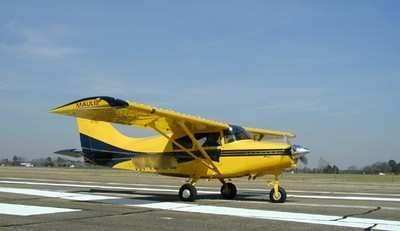Wed, Feb 18, 2015
Probable Cause Report Released From Parkers Prairie, MN Maule Accident
Sometimes it just gets back to the basics. Such is the case in a probable cause report released by the NTSB from an accident in February, 2013 in Parkers Prairie, MN, that resulted in the fatal injury of the pilot of a Maule MXT-7-180.

According to the report. the pilot was returning home from a cross-country business trip when the accident occurred. A witness reported hearing a “loud pop” that sounded like an “engine backfiring” followed by the sound of impact. Another witness reported seeing the airplane flying low and hearing the engine sputter just before the airplane impacted terrain. The airplane impacted a snow-covered field and traveled about 300 ft before it came to rest. First responders reported smelling fuel near the main wreckage. A postaccident examination of the airplane and engine did not reveal any mechanical anomalies that would have resulted in the accident.
The airplane’s fuel tanks were filled before departure. Each main fuel tank held 20 gallons of usable fuel, and each auxiliary fuel tank held 15 gallons of fuel. The main fuel tanks supplied fuel to the engine. The fuel selector was found in the “both” position. The auxiliary fuel tanks replenished the main fuel tanks via transfer pumps that were turned on by switches in the cockpit when needed; the fuel transfer pump switches were not located in the wreckage. The airplane’s estimated fuel consumption rate was about 9 gallons per hour. According to the tachometer, the flight was 4.1 hours long, which would have used about 37 gallons of fuel plus additional fuel for taxi and climb. Thus, it is likely that the pilot did not transfer fuel from the auxiliary fuel tanks to the main fuel tanks in a timely manner, which resulted in the engine being starved of available fuel.
The National Transportation Safety Board determines the probable cause(s) of this accident to be the pilot’s failure to transfer fuel from the auxiliary fuel tanks to the main fuel tanks in a timely manner, which resulted in fuel starvation to the engine.
(Image from file. Not accident airplane)
More News
“We respectfully call on the City of Mesa to: 1. Withdraw the landing fee proposal immediately 2. Engage with the aviation community before making decisions that impact safet>[...]
High Speed Taxiway A long radius taxiway designed and provided with lighting or marking to define the path of aircraft, traveling at high speed (up to 60 knots), from the runway ce>[...]
Aero Linx: International Federation of Airworthiness (IFA) IFA uniquely combines together all those with responsibility for policies, principles and practices concerned with the co>[...]
Controller’s Expectation That VW02 Would Have Departed Sooner Led To An Inadequate Scan And Loss Of Situational Awareness Analysis: A Robinson R-44 helicopter N744AF, VW02 (V>[...]
A Few Questions AND Answers To Help You Get MORE Out of ANN! 1) I forgot my password. How do I find it? 1) Easy... click here and give us your e-mail address--we'll send it to you >[...]
 Aero-News: Quote of the Day (12.09.25)
Aero-News: Quote of the Day (12.09.25) ANN's Daily Aero-Term (12.09.25): High Speed Taxiway
ANN's Daily Aero-Term (12.09.25): High Speed Taxiway ANN's Daily Aero-Linx (12.09.25)
ANN's Daily Aero-Linx (12.09.25) NTSB Final Report: Diamond Aircraft Ind Inc DA20C1 (A1); Robinson Helicopter R44
NTSB Final Report: Diamond Aircraft Ind Inc DA20C1 (A1); Robinson Helicopter R44 ANN FAQ: Q&A 101
ANN FAQ: Q&A 101



